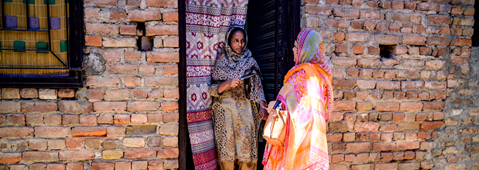Disability
Disability is part of being human. Almost everyone will temporarily or permanently experience disability at some point in their life. An estimated 1.3 billion people – about 16% of the global population – currently experience significant disability. This number is increasing due in part to population ageing and an increase in the prevalence of noncommunicable diseases.
Disability results from the interaction between individuals with a health condition, such as cerebral palsy, Down syndrome and depression, with personal and environmental factors including negative attitudes, inaccessible transportation and public buildings, and limited social support.
A person’s environment has a huge effect on the experience and extent of disability. Inaccessible environments create barriers that often hinder the full and effective participation of persons with disabilities in society on an equal basis with others. Progress on improving social participation can be made by addressing these barriers and facilitating persons with disabilities in their day to day lives.
For more information, see the International Classification of Functioning, Disability and Health (ICF).
An estimated 1.3 billion people – or 1 in 6 people worldwide – experience significant disability.
Persons with disabilities die earlier, have poorer health, and experience more limitations in everyday functioning than the rest of the population due to health inequities.
These health inequities arise from unfair conditions that affect persons with disabilities disproportionally, including stigma, discrimination, poverty, exclusion from education and employment, and barriers faced in the health system itself.Compared to persons without disabilities, some persons with disabilities:
- die up to 20 years earlier;
- have more than a double risk of developing comorbid conditions such as depression, asthma, diabetes, stroke, obesity or poor oral health;
- find inaccessible health facilities up to 6 times more hindering; and,
- are up to 15 times more limited by inaccessible and unaffordable transportation.
It is a state obligation, through the health sector in coordination with other sectors, to address existing health inequities so that persons with disabilities can enjoy their inherent right to the highest attainable standard of health. Disability inclusion is critical to achieving the Sustainable Development Goals and global health priorities of universal health coverage, protection in health emergencies and healthier populations.
Acting to achieve health equity for persons with disabilities is acting to achieve Health for All.
WHO works to fully integrate and promote disability inclusion in the health sector. It works to ensure persons with disabilities:
- have equitable access to effective health services;
- are included in health emergencies preparedness and responses; and
- can access cross-sectorial public health interventions to achieve the highest attainable standard of health.
As requested in the World Assembly Resolution 74.8, WHO will launch the Global Report on Health Equity for Persons with Disabilities on 2 December 2022, which provides Member States and development partners with updated evidence, analysis and recommendations on disability inclusion in the health sector. Also requested in the resolution, WHO is developing technical guidance to support Member States to take action to realize the highest attainable standard of health for persons with disabilities. This guidance will be in the form of a national strategic planning toolkit, the Disability Inclusion in the Health Sector Guide for Action. It will provide practical guidance on how to develop a comprehensive plan to advance health equity for persons with disabilities through integration into health systems governance and planning.
WHO strives to be an inclusive organization, providing an enabling environment in which persons with disabilities fully and effectively participate on an equal basis with others, and that disability is systematically integrated in all work of the Organization, as it advances its mission to promote health, keep the world safe and serve the most vulnerable. In December 2020, WHO has launched its policy on disability and an action plan for its implementation. These documents serve as the agenda for implementing the United Nations Disability Inclusion Strategy across WHO, which will ensure disability inclusion is consistently and systematically integrated into all aspects of WHO’s operational and programmatic work.












